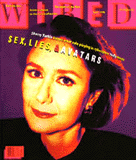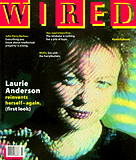
Women's Position Within Wired


One of the two creators of "Wired" magazine is a woman and the magazine does consist of a few women writers. While the male writers discuss computer politics and the latest trends in computer hardware, female writers generally write about sex or dating. Although women are included in the creation of this magazine, their work tends to display ideas commonly associated with womanhood.
Millar argues that "Wired" attracts male readers simply because it excludes women readers. She claims that "Wired" believes that "the digital age is the domain of a masculine digital elite". (p. 90) She believes this because they exclude the "other", which include women, minorities, the poor, and technology illiterates. By doing this they are recreating ideas of the past hierarchies. She devotes a chapter to examining techniques that "Wired" uses to reinforce sexist and racist assumptions. In advertisements and editorials gender and race stereotypes have been used; common ones include women as seen as sex objects, or non-threatening workers such as a secretary, and taking on the maternal role. The images and text representing women involve women to be in a less social status than men. However, this isn't only done with women, black men are also put in subordinate position. Black males are seen as the "macho muscleman, the exotic African, the exceptional middle class, business suited Black man." (p. 97)
Considering there are many women in the technology field, since 1993 only two have appeared on the cover of this magazine. In both cases, gender was greatly emphasised to ensure the audience was aware of their unusual superiority status. Both cover shots had the women looking away from the camera and pictures inside the magazine displayed their heads tilted if they were looking head on into the camera. By taking these camera angles, the readers are not allowed to see these women as their equals. Pictures of both women were printed in soft pink and blue backgrounds and much attention isn't given to their research, which helped them get into the magazine.
Millar concludes that sex sells for "Wired" magazine and caters towards male heterosexual desires. Women are used in the magazine for the pleasure of men and are displayed in a sex role or are sexualised if they are not in a motherly, nurturer, or teacher role (Pg. 97). For women in the magazine, the past looks the same as the future.
Through her findings, she concludes that because there is a lack of positive images of women in minorities they are not allowed to be an important part of the digital age. Although this is where the future lies, it once again reinforces inequalities of the past. Millar argues that "Wired" magazine displays the future to consist of mainly white males.
|
Anisa Tayab and Sulman Sheikh
email Anisa & Sulman at: anisasulman@yahoo.com |